
How to Use neo 6m gps: Examples, Pinouts, and Specs
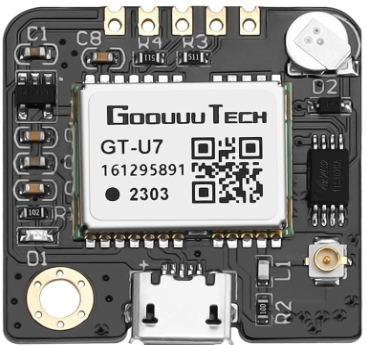
 Design with neo 6m gps in Cirkit Designer
Design with neo 6m gps in Cirkit DesignerIntroduction
The Neo-6M GPS module is a compact, high-performance GPS (Global Positioning System) receiver with a built-in antenna, designed for a broad spectrum of OEM applications. It is widely used in navigation devices, time synchronization, and location-based projects. The module is favored for its ease of integration, high sensitivity, and low power consumption.
Explore Projects Built with neo 6m gps
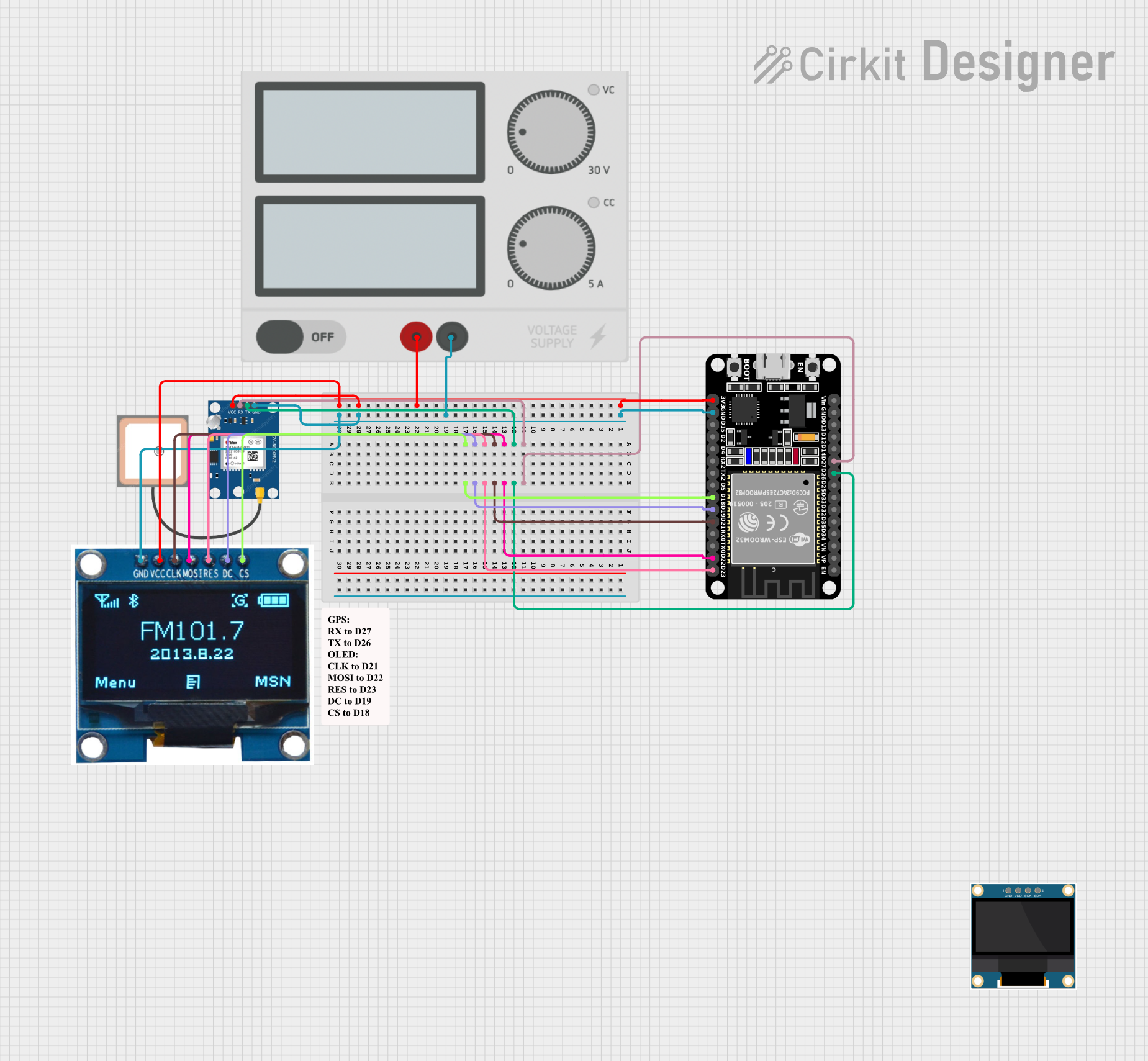
 Open Project in Cirkit Designer
Open Project in Cirkit Designer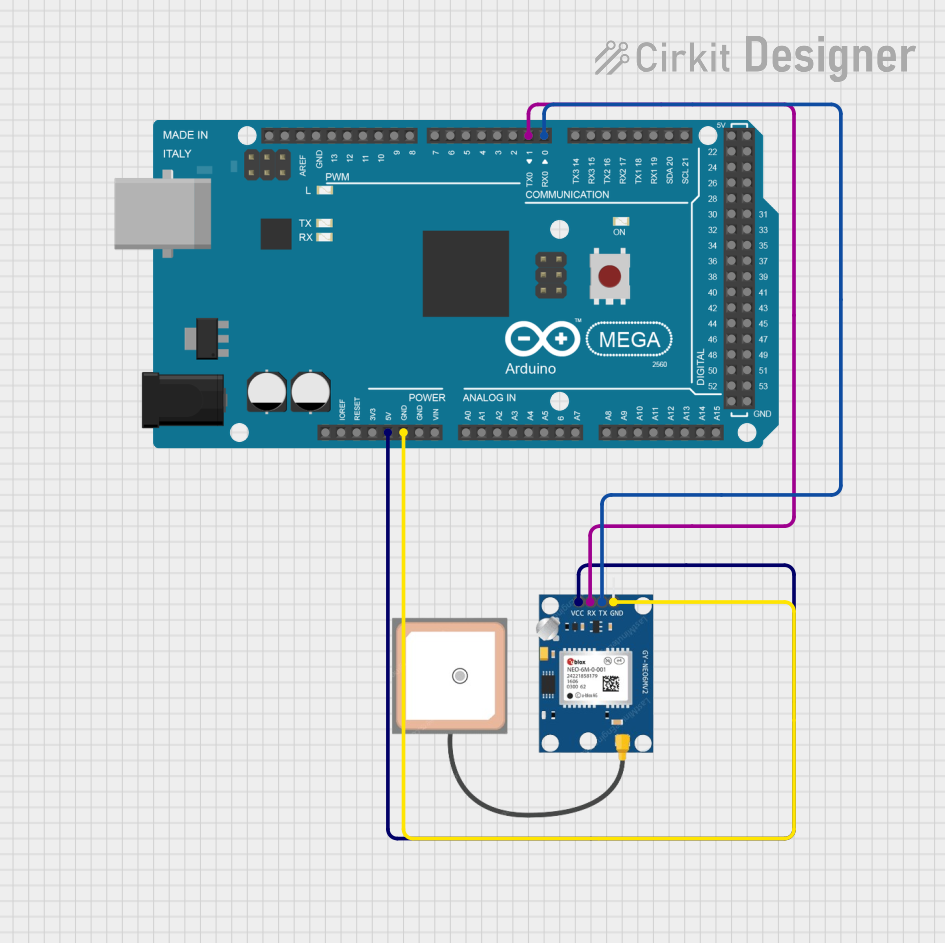
 Open Project in Cirkit Designer
Open Project in Cirkit Designer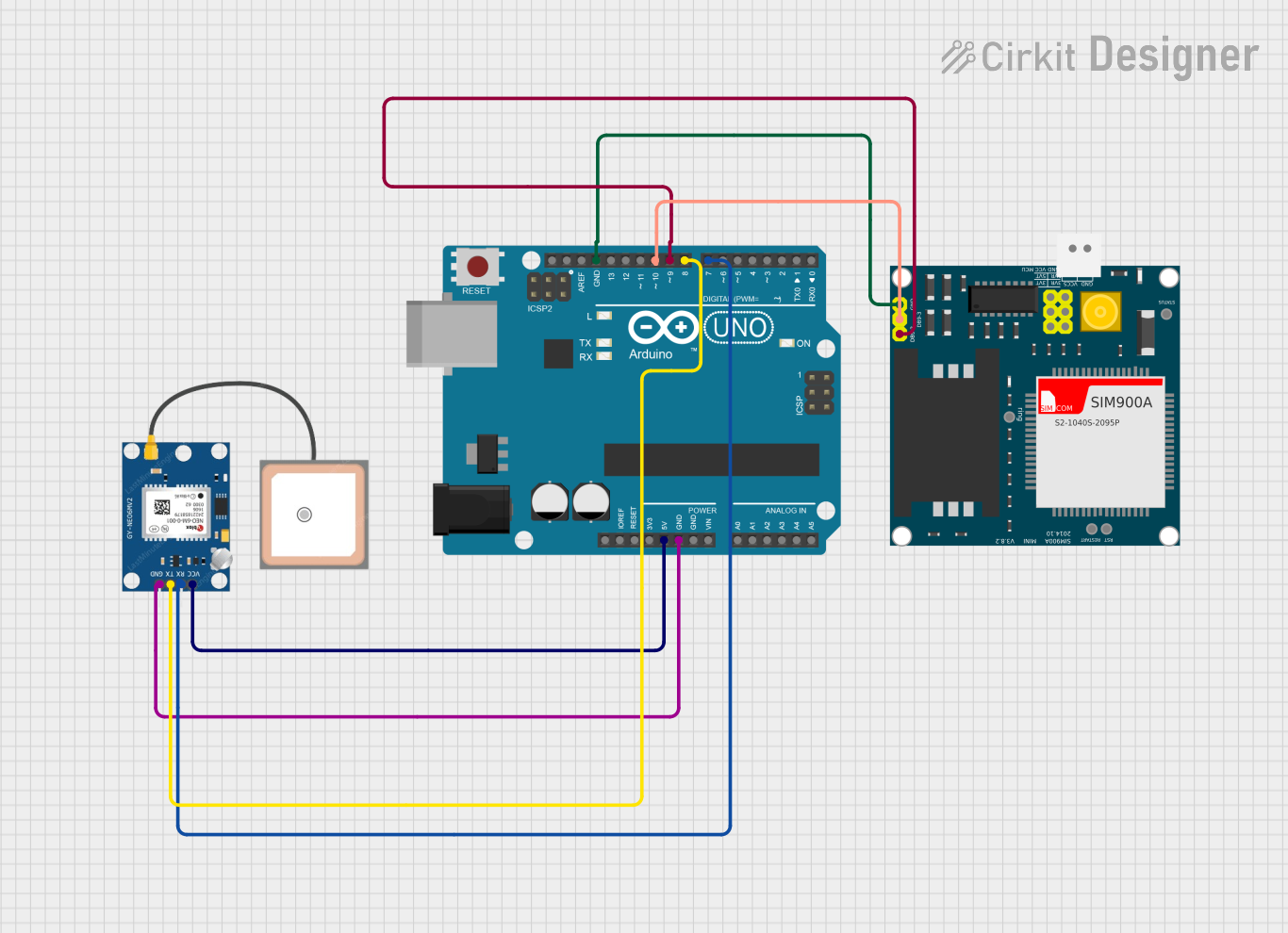
 Open Project in Cirkit Designer
Open Project in Cirkit Designer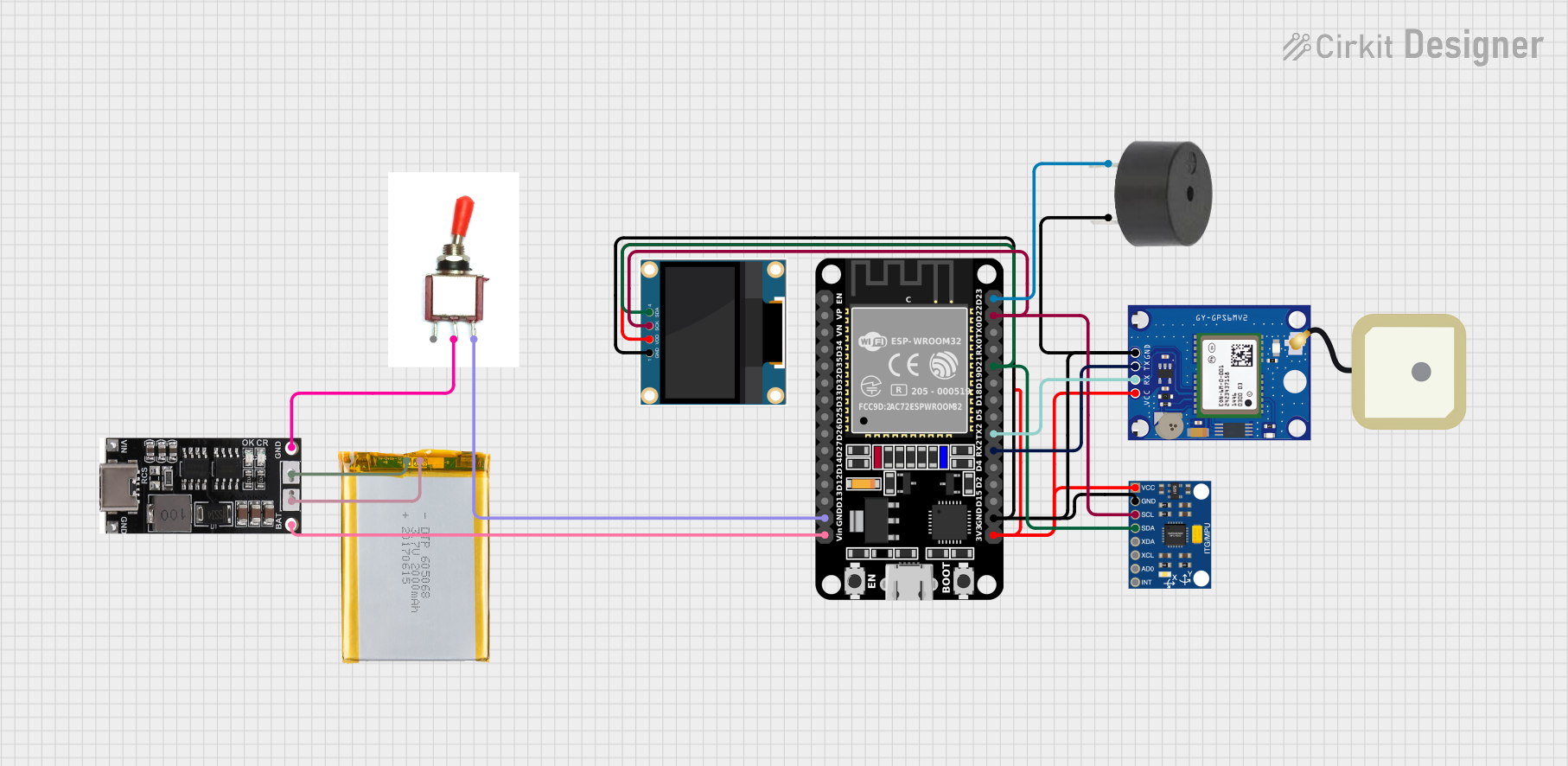
 Open Project in Cirkit Designer
Open Project in Cirkit DesignerExplore Projects Built with neo 6m gps

 Open Project in Cirkit Designer
Open Project in Cirkit Designer
 Open Project in Cirkit Designer
Open Project in Cirkit Designer
 Open Project in Cirkit Designer
Open Project in Cirkit Designer
 Open Project in Cirkit Designer
Open Project in Cirkit DesignerCommon Applications and Use Cases
- Personal navigation devices
- Asset tracking systems
- Time synchronization for networks
- UAVs and autonomous vehicles
- Geocaching and outdoor sports
- Fleet management
Technical Specifications
Key Technical Details
- Receiver Type: 50 Channels, GPS L1 frequency, C/A Code
- Sensitivity: -161 dBm
- Update Rate: Up to 5 Hz
- Acquisition Times: Cold starts: 27s (typ.), Hot starts: 1s (typ.)
- Accuracy: Position 2.5m CEP, SBAS 2.0m CEP
- Operating Voltage: 3.0V to 5.5V
- Power Consumption: 50mA at 5V (typical)
- Operating Temperature: -40°C to 85°C
Pin Configuration and Descriptions
| Pin Number | Name | Description |
|---|---|---|
| 1 | VCC | Power supply (3.0V to 5.5V) |
| 2 | GND | Ground connection |
| 3 | TX | Transmit data out (TTL level) |
| 4 | RX | Receive data in (TTL level) |
| 5 | PPS | Pulse per second output |
Usage Instructions
How to Use the Component in a Circuit
- Power Supply: Connect the VCC pin to a 3.0V to 5.5V power source and the GND pin to the ground.
- Data Communication: Connect the TX pin of the GPS module to the RX pin of the microcontroller and the RX pin to the TX pin of the microcontroller.
- PPS Output: The PPS pin outputs a pulse per second, which can be used for precise timing.
Important Considerations and Best Practices
- Ensure that the GPS module has a clear view of the sky for optimal performance.
- Avoid placing the module near devices that emit RF noise, as it may interfere with signal reception.
- Use a baud rate of 9600 for serial communication unless configured otherwise.
- For initial use, the module may take a few minutes to acquire a fix due to the cold start.
Example Code for Arduino UNO
#include <SoftwareSerial.h>
// The GPS module's TX pin is connected to Arduino pin 4 (RX)
SoftwareSerial gpsSerial(4, 3); // RX, TX
void setup() {
// Start the serial communication with the host computer
Serial.begin(9600);
while (!Serial) {
; // Wait for serial port to connect
}
// Start the serial communication with the GPS module
gpsSerial.begin(9600);
}
void loop() {
// Check if the GPS module has output data
if (gpsSerial.available()) {
// Forward the data from the GPS module to the host computer
Serial.write(gpsSerial.read());
}
// Check if the host computer has output data
if (Serial.available()) {
// Forward the data from the host computer to the GPS module
gpsSerial.write(Serial.read());
}
}
Troubleshooting and FAQs
Common Issues Users Might Face
- No Data Output: Ensure the module has a clear view of the sky and check connections.
- Inaccurate Position: Wait for the module to get a stable fix; initial readings may be inaccurate.
- Intermittent Signal: Avoid placing the module near devices that emit RF noise.
Solutions and Tips for Troubleshooting
- Power Cycle: If the module is not responding, try power cycling it.
- Check Wiring: Ensure all connections are secure and correct.
- Serial Monitor Baud Rate: Set the baud rate of the serial monitor to 9600 to match the GPS module.
FAQs
Q: How long does it take for the Neo-6M to get a fix? A: It typically takes 27 seconds for a cold start and 1 second for a hot start.
Q: Can I use the Neo-6M indoors? A: GPS signals are weak indoors. It's recommended to use the module outdoors or near a window.
Q: What is the purpose of the PPS pin? A: The PPS pin provides a pulse per second signal that can be used for precise timing applications.
Q: How can I change the update rate of the GPS module? A: The update rate can be changed by sending specific commands to the module using the UBX protocol.
Q: Is an external antenna required? A: The Neo-6M comes with a built-in antenna, but an external antenna can be used for improved reception.